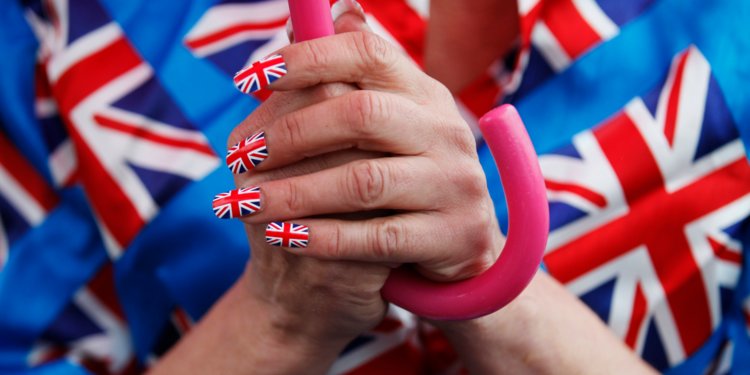Suella Braverman’s colour-coded stance…all red, white and blue
On Tuesday, November 1, ‘The Times’ London carried a photograph of Britain’s Home Secretary Suella Braverman, heading into 10, Downing Street for a cabinet meeting. She wore red, white and blue. In fact so well did her costume – red jacket, white dress and blue high-heeled shoes – harmonise with the colours of the British flag, Ms Braverman might almost have taken her cue from the Union Jack when she emerged from her dressing room that morning. (I don’t have a Getty Images subscription so am only putting up a small, chopped, watermarked image.)

Home Secretary Suella Braverman arrives for a Cabinet Meeting at 10 Downing Street on November 1, 2022 in London, England. It was the second meeting of Rishi Sunak’s cabinet since he assumed the role of prime minister last week.
For all that she was making a colour-coded statement, it didn’t really help Ms Braverman’s claims to a higher form of patriotism. She seemed to head straight into a kerfuffle about the nature and quality of love of one’s country when she entered 10, Downing Street. There, her boss, Prime Minister Rishi Sunak, pointedly took a vastly different position from Ms Braverman on the testy issue of migration.
Within hours of Ms Braverman’s contentious declaration that southern England is facing an “invasion” of illegal immigrants, Mr Sunak seemed to feel no pressure from the hordes allegedly storming the barricades. Instead, he said Britain would always be a “compassionate, welcoming country” and that the “entire government” needed to work together to deal with backlogs of asylum claims and tackle the small boats crisis. It was a mellifluous message, more conducive to bathing Britain’s image in a gentle glow.
And Robert Jenrick, Mr Sunak’s closest political friend, as well as Immigration minister in Ms Braverman’s department, spoke out quietly but firmly. On Tuesday, he told Times Radio that ministers had an obligation to “choose your terminology wisely”, later adding that it was “not a phrase that I have used”.
Firm or not, Mr Jenrick was dissembling. It’s not a phrase that is in question, but a word.
“Invasion” is one of the oldest othering tropes in the book. Literally. Nearly 150 years ago, the ‘San Francisco Chronicle’ carried an advert for a new book, which read as follows: “THE CHINESE INVASION! They are Coming, 900,000 Strong.” It concluded by asking, “What are you going to do about it? Nations of the earth take warning.”
That emotive word – “invasion” – would eventually have its expected effect. In 1882, the US Congress passed the Chinese Exclusion Act. It would be the first major law that barred an entire group from entering the US based on their nationality. (Donald Trump would later do something similar in 2017, which just goes to show current events often feel like a page lifted out of the history books.)
“Invasion” would go on to be a persistent theme when it came to people entering a country, legally or illegally. This is why immigrants are often said to be coming in hordes, swarming in, flooding into some part of the world, drowning the seen, subsuming everything.
As someone recently pointed out, immigration reform advocacy organisation America’s Voice has reported that 546 pieces of political messaging from US Republicans employed versions of “white replacement” and “migrant invasion” talking points in this election cycle. Unsurprisingly then, a US National Public Radio poll from August found a majority of Americans incorrectly believed that asylum-seekers at the US-Mexico border were akin to a military invasion.
The perils of this extreme way of thinking are obvious. In March 2019, a white man shot dead 51 worshipers in a mosque in Christchurch, New Zealand. He had already put out an anti-immigrant manifesto titled ‘The Great Replacement’.
But Ms Braverman, proud British patriot and trained lawyer, probably knows all that.


